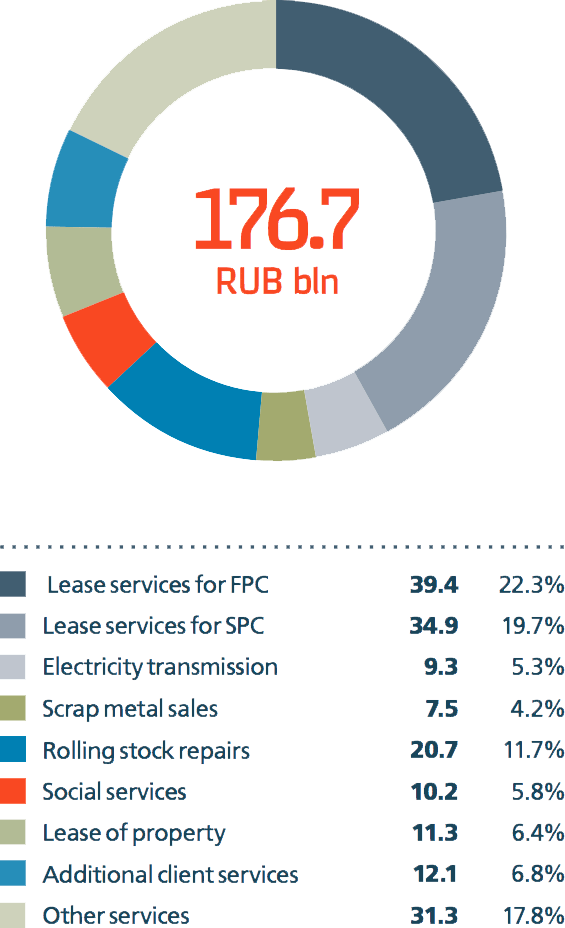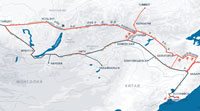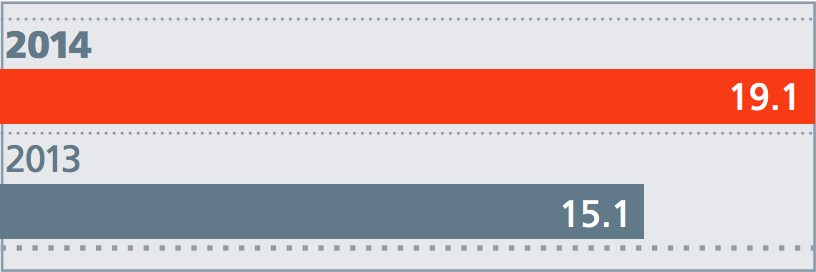Other types of activities

Russian Railways generated income of RUB 176.7 bln from other activities in 2014, an increase of RUB 9.7 bln, or 5.8%, compared with the previous year. Profit from other activities increased by RUB 4 bln, or 26.5%, compared with 2013 and totalled RUB 19.1 bln.
The structure of income from other sales did not change in 2014 compared with 2013, as the bulk of income came from the low-margin segment of services with limited room for profit growth (lease of rolling stock by suburban companies and Federal Passenger Company, services of social facilities) and services in segments regulated by the executive regional authorities (electricity transmission to third-party consumers, housing and utility services, communications services).
The proportion of profit from all types of activities is actively growing within the Company’s overall sales profit and reached 33% in 2014.
Key factors in the positive profit dynamics from other types of activities include measures taken by the Company to enhance the efficiency of other sales through developing and improving the customer focus as well to as strengthen its market positions, the efficiency of work to approve tariffs for regulated services and continuous work to reduce the cost of the services it provides.
The Company managed to achieve this positive trend despite:
- the consolidation of integrated transportation and logistics services for customers at ports into Russian Railways Logistics;
- the termination of freight car leasing due to the transfer of railcars to the charter capital of Federal Freight Company;
- a reduction in the lease of rolling stock used for long-haul and suburban passenger transportation (by 4% and 5%, respectively)
In order to ensure a balance in its financial and economic activities, the Company actively pursued a policy that aims to monitor conditions and expand the range of services provided as well as employ flexible tariff setting.
The consistent policy pursued by management to accelerate the development of other sales and improve the margin made it possible to weather the negative economic trends seen in the second half of 2014 given the slump in consumer activity.
Structure of income from other types of activities in 2014, RUB bln











